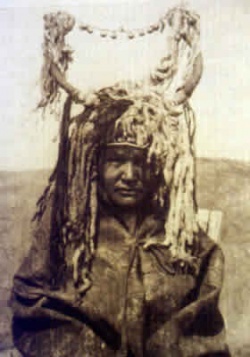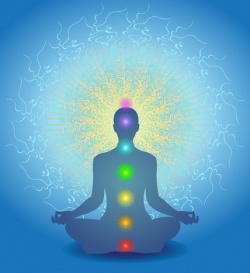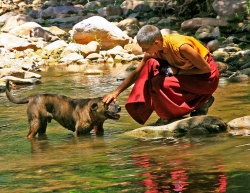Shedras in the Dechen Community
A milestone was reached in December 2007 at the Mikyo Dorje Shedra in Manchester when Lama Jampa completed his teaching on The Supreme Continuity by Maitreya. It marked the conclusion of the entire cycle of Karma-Kagyu works on the extraordinary Extrinsic Emptiness system of philosophy which he began teaching long ago in 1994 at the modest beginnings of the Shedra.
During this time well over one hundred students have received in-depth guidance in works composed by the third Karmapa, Ranjung Dorje, the eighth Karmapa, Mikyo Dorje, Jamgon Kongtrul Lodro Thaye and Karma Thinley Rinpoche. Indeed it was the first time that Rinpoche’s own text, The Lamp that Dispels Darkness , a commentary on Discriminating Between Consciousness and Primordial Wisdom had been taught in public.
The Supreme Continuity was a fitting conclusion since it is the source of the precious teaching on the buddha-nature innate in all beings, which is the cornerstone of Kagyu philosophy. Transmitted originally by the bodhisattva Maitreya to Asanga, it remains an indispensable work, on the build-up between the sutra and tantra teachings of the Buddha.
What is a Shedra?
In Tibet a shedra was a college of studies attached to a major monastery. In fact relatively few monasteries were large enough to possess shedras and often young monks had to travel to the principal monasteries of their tradition for such studies. There they would be able to pursue studies under the direction of highly qualified masters on the topics of Madhyamaka (The Philosophy of the Middle Way), Paramita (The Path of the Bodhisattva), Pramana (Logic and Epistemology), Vinaya (Monastic Discipline), Abhidharma (Higher Teachings) and Tantra. These topics were taught through an exegesis of the classical philosophical works (shastras) of Indian Buddhism together with the relevant explanatory commentaries composed in Tibet. Such a system allowed for an extraordinary depth of knowledge and insight that could act as a superb foundation for meditation. Furthermore, those who graduated from the shedras would, in many cases, subsequently take up responsibilities as textual and philosophical teachers themselves, thus assuring the continuation of such sacred knowledge.
Karma Thinley Rinpoche himself studied in a number of different shedras in his younger years. Such a wandering scholarly life-style was not uncommon amongst distinguished young lamas in Tibet. Thus at the Sakya Lachung monastery, which had a close link to Rinpoche’s family, Rinpoche studied under Khenpo Gurga. At the Kagyu shedras in Dil-yak monastery, which was also in Rinpoche’s home province of Nangchen, Rinpoche’s philosophical master was Drupon Sangay Phuntsok Rinpoche, from whom he received the Jewel Ornament of Liberation and a number of works on the Extrinsic Emptiness system.
At Neten monastery, founded in the 19th century by the Nyingma treasure-revealer, Chogyur Lingpa, Rinpoche attended as a visiting student. There his master was Khenpo Pema Damcho, a disciple of Khenpo Zhenga from Dzokchen monastery. While at Neten, Rinpoche received various works of Jamgon Mipham Rinpoche and Khenpo Zhenga’s commentaries on the Five Dharmas of Maitreya .
Bringing Shedras to the West
In the early years of Tibetan Buddhism in the West, the decades of the 70s and 80s, there were no shedras with a systematic pattern of study. However, in these years Lama Jampa obtained teaching and transmission of various of the key shedras works of the Kagyu and Sakya traditions from Karma Thinley Rinpoche and other masters such as Ngor Phende Rinpoche, Khenpo Tsultrim Gyamsto Rinpoche and Thartse Khen Rinpoche. During these years Rinpoche suggested that a shedra be started but it was not until the mid-90s that shedra courses reflecting our community’s dual inheritance, Sakya and Kagyu, would commence under Lama Jampa’s direction.
The principal challenge for our community in setting up shedras is one that is faced by all Tibetan Buddhist organisations in the West. How can the shedra education be delivered successfully in the context of a lay community? After all, even in the medieval period in Tibet the first shedra was established at the Kadam monastery of Sangphu and not among the vajrayana practising lay yogins of the time.
So in our Mikyo Dorje shedra as in our Sakya shedra there is a two-fold dimension to the programme. Lama Jampa teaches programmes on specific texts and subsequently students work in the various study groups, which are located throughout the community. Through such a method students’ understanding of the authentic texts for which they have received transmission and explanation is refined. Finally some but by no means all students sit individual exams on particular texts with Lama Jampa. It is from such students that future philosophical teachers in our community will emerge.
The Programmes
The location of our Sakya shedra teachings at Sakya Changlochen Ling in France has afforded an opportunity for both English and continental people to attend. The shedra’s core programme is based upon the following six texts:
Sakya Pandita’s Elucidating the Thought of the Sage
Shantideva’s Entering the Conduct of the Bodhisattva
Maitreya’s The Middle and Extremes
Chandrakirti’s Entering the Middle Way
Sonam Tsemo’s The General Presentation of the Tantra Sets
Saka Pandita’s Discriminating the Three Vows
The Mikyo Dorje Shedra teaching takes place in Manchester and its programme includes the following texts:
Gampopa’s Jewel Ornament of Liberation
Gampopa’s The Jewel Garland of the Supreme Path
Karmapa Rangjung Dorje’s Showing the Buddha Nature
Karmapa Rangjung Dorje’s Discriminating Between Consciousness and Primordial Wisdom
Karmapa Mikyo Dorje’s Correct Analysis of the Extrinsic Emptiness of the Middle Way
Maitreya’s The Supreme Continuity
Jamgon Mipham’s Entering Into Learning
Situ Tenpe Nyinche’s Instructions of the Supreme Siddhas



